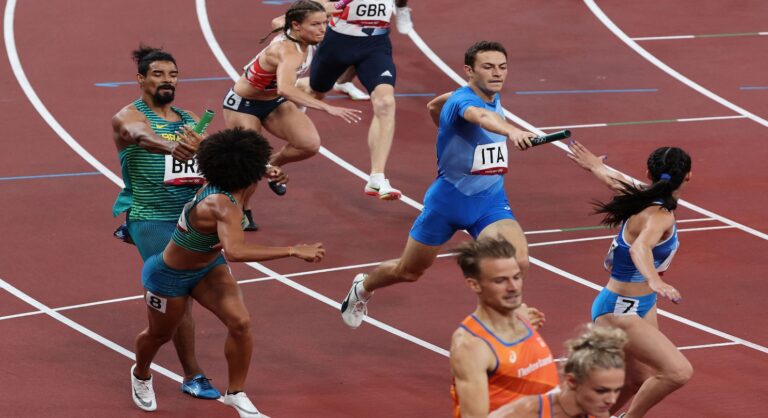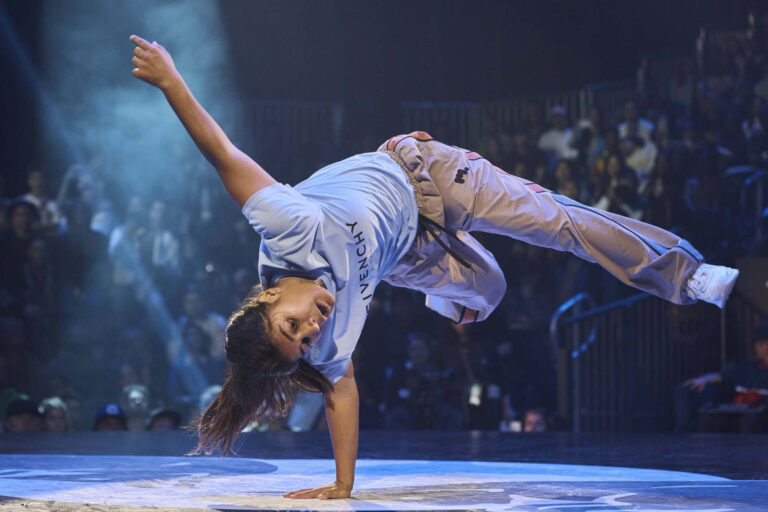Mixed-gender sports: breaking the real barrier

A sporting evolution is taking place; one where all sides – and genders – win.
Mixed-gender sports are on the rise and herald a new era of next-level inspiration and inclusion for athletes and fans alike.
These events transcend traditional gender roles and promote participation regardless of identity, transforming the narrative to one of true inclusion where we see all genders competing in the same sport at the same time.
They are a powerful, unparalleled way to communicate gender equality and transform perceptions.
Illustrating this trend are amateur sports such as community marathons, fun runs, Pickleball and Ultimate Frisby, and elite sports like Equestrian, ice skating, Luge, tennis, badminton, and sailing.
The Olympics and Paralympics have also embraced mixed-gender sports with events such as the mixed-gender swimming relays.
Events and sports like these have my full support and it seems I’m not alone. Perhaps one of the reasons for the popularity of mixed-gender sports is that they are influential in sparking participation by those who want to emulate someone just like them.
Several professional and elite sports like golf, volleyball and relays are indicative of the shift in which males and females compete together and against each other as a team. The IOC’s adoption of more mixed-gender events also illustrates this trend.
It makes sense to suggest that these competitions might promote more participation by removing implicit barriers perpetuated by arbitrary rules and perceptions that men and women can’t compete on equal footing.
There are so many sports and innovative new events in competitions that can enable fairness and performance by leveraging the advantages of mixed-gender sports. And there is mounting evidence to support this approach.

For example, research supports that increased female participation associated with mixed-gender competitions increases the competitiveness and development of all athletes, by removing gender-specific disadvantage. These disadvantages include heightened competitive pressure on female athletes resulting in underperformance and adverse participation by gender.
This issue affects the sustainability of sport by underestimating female sportspersons’ talent and their opportunities for talent development pathways. In contrast, male athletes competing in segregated sports are not adversely impacted in this context. In mixed-gender competitions, it turns out that these gendered performance differences are eliminated.
During the Tokyo 2020 Olympics, 18 mixed-gender events including the 4x400m mixed relay in athletics, the swimming 4x100m mixed medley, and the judo mixed team were hosted, with many of these scheduled on the high-rating “Super Saturday” July 31st.
This year, Paris will be the first Olympic Games to achieve gender parity in participation. They have included 22 mixed gender events, many of which are designed to resonate with youth.

Successful models for mixed-gender competitions are contingent upon innovation, creativity, and the increasing drive across all sport to commit to gender equality. For example, the swimming 4x100m medley relay comprises two men and two women, with teams permitted to choose the order of swimmers, while in the triathlon mixed race, teams of two men and two women each complete three legs of swimming, cycling and running across the four members in the team.
While we can rejoice the impacts of the “Matilda Effect” and the “Caitlin Clark Effect” on the visibility of female athletes and sports, sport still faces a challenge in growing the participation of females from their early teens, in comparison to males.
There is also a significant gender pay gap to fix across most professional sports and the complexity of the binary demarcation and identification in a gender-fluid world. Many of these issues derive from the binary distinction of the sex of athletes traditionally adopted in sport, and the structures of sports.
While mixed-gender competition may not be universally practical for safety and fairness reasons related to different biology, the mixed-gender approach suggests new sports, new competitions and events that are transforming this perspective.
A recent study revealed the opportunity and benefits of mixed-gender training in collegiate sports, with the benefits particularly strong for athletes in segregated gender sports. This “gender-collaborative training” concept can start with mixed-gender workouts and then progress to sports-specific training to overcome any resistance to this approach.
The mixed-gender model is the impetus we need to evolve outdated sports structures and rules to be more inclusive, relevant, and fair. Teams and competitions need to be designed to be gender neutral, as we see in both elite and community competitions. The way we test abilities for talent pathways in sports also needs to evolve so that they encompass a broader range of capabilities and are more inclusive.
This future of elevating gender equality through the powerful visibility of mixed-gender sports is certainly bright when it comes to next-generation sports like esports, breakdancing, skateboarding and robot fighting.
“Breaking” in the Paris Olympics schedule will include a mixed-gender competition, in addition to “b-boys” and “b-girls,” signalling the mission of gender equality and youth relevance that sport must increasingly embrace.
Likewise, the context of esports presents a remarkable opportunity to promote diversity and inclusion more broadly, by enabling all genders and all ability athletes to compete alongside each other and within teams.
The future of sport will inevitably include new sports, and these innovations will undoubtedly herald an increase in gender-neutral sports where we are likely to see humans, not genders, competing against each other.
Novel sports might seek to eliminate gendered differences in size or strength, for example, in favour of strategy, endurance, reflexes, speed and creativity. Hybrid sports like chess boxing and e-cycling illustrate this innovative trend towards new competition design and gender and youth inclusion.
A future of both mixed abilities and gender can also be envisaged when contemplating the power of these approaches.
The sky is the limit. And it will be just as much of a spectacle, but much more inclusive.

About the Author
Professor Sarah Kelly, renowned for her global academic, leadership and governance expertise across education and sports management, drives forward-thinking initiatives to the world stage. A distinguished ‘prac-academic’, commercial lawyer and champion for inclusivity, Sarah leads with innovation and insight. For exclusive updates on the latest in sport, management, leadership, education, innovation, and research, subscribe at DrSarahKelly.com.au
